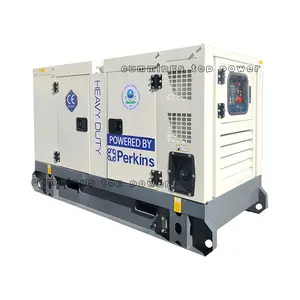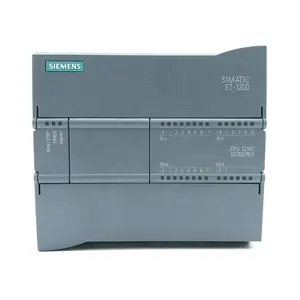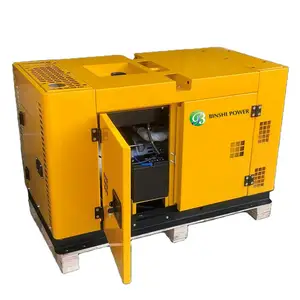Popular in your industry













Top categories
About surge protector with two prongs
Introduction
As our reliance on technology grows, protecting our electronic devices from power surges becomes increasingly important. This guide explores the realm of two-prong surge protectors, designed to shield your electronics from power fluctuations. Despite lacking a grounding wire, these surge protectors offer several advantages, including compactness, portability, and compatibility with older outlets. However, to maximize their effectiveness and ensure the safety of your home and devices, understanding their proper usage and safety precautions is essential.
Demystifying Two-Prong Surge Protectors
Two-prong surge protectors are often debated for their effectiveness. They are designed to protect against power fluctuations, but their functionality is limited without a ground. Surge protectors work by diverting voltage spikes to the ground, and without a ground, there's no place for the spike to go. Therefore, while they may offer some level of protection, their performance is not as reliable as their three-prong counterparts. For better protection, especially for sensitive electronics like computers, an Uninterruptible Power Supply (UPS) is recommended.
Surge Protection Basics
Surges and Transient Voltage Surges are temporary increases in voltage and current in an electrical circuit, often causing significant damage to electronic equipment. The most common cause of these surges is lightning strikes, but they can also be caused by high-power electrical devices and faulty wiring. A surge protector, also known as a Transient Voltage Surge Suppressor (TVSS), Surge Protection Devices (SPD), or Surge Suppression Equipment (SSE), is designed to protect electrical and electronic equipment from these power surges and voltage spikes. It works by diverting the excess voltage and current from a surge into a grounding wire, preventing it from damaging the equipment.
Two-Prong vs. Three-Prong Surge Protectors
Two-prong outlets feature only a neutral and a hot wire, typically found in older homes. On the other hand, three-prong outlets also include a grounding wire, making them safer. The grounding wire serves as a safety measure, designed to trip a home’s electrical panel after an electrical surge, protecting homes and families from electrical fires, appliance or electronic damage, and shocks. Without a grounding wire, two-prong outlets can potentially be dangerous, leading to fires or shocks, and damaging plugged-in electronics or appliances.
Advantages of Two-Prong Surge Protectors
Two-prong surge protectors offer several benefits. They are compact and sleek, making them ideal for travel or use in cramped spaces. They can transform your 2-prong outlet into a safe and organized powering station, allowing you to charge multiple devices simultaneously. These surge protectors provide crucial protection for your devices against power fluctuations and surges. They are also equipped with safety features such as slide-to-lock safety covers, an On/Off switch, and a circuit breaker. Some models even offer the flexibility of a long extension cord and the convenience of a wall-mountable design.
Portability and Convenience
Two-prong surge protectors offer a high degree of portability and convenience. They are particularly useful in homes with older electrical systems that feature two-prong outlets. These surge protectors can be moved around the house easily, providing power extension wherever needed. However, it's important to use them properly to ensure safety. For instance, never remove the ground pin of a 3-prong plug to fit into a 2-prong outlet; always have the outlet changed to match the plug. Improper use can lead to electrical shocks or even fire.
Compatibility with Older Outlets
Older homes often have two-prong outlets, which can pose a challenge when using modern surge protectors designed for three-prong outlets. However, surge protectors can still offer some protection against power fluctuations even with two-prong outlets. It's important to note that without a ground, the effectiveness of surge protectors is limited. For comprehensive protection, especially for sensitive electronics like computers, it's recommended to use a UPS (Uninterruptible Power Supply) system. This system can provide power during outages and effectively manage power fluctuations.
Effective Use of Two-Prong Surge Protectors
When using two-prong surge protectors, it's crucial to understand their limitations and proper usage. The common 2 to 3 prong adapter has a screw tab, usually colored green, meant to go under the cover plate screw. This is because there was a time when a grounded wire was used, but outlets were still 2 prong. Therefore, it's possible the center screw on the outlet is grounded. While the best option is to install grounded plugs, if you're renting, you can use the 2 to 3 prong adapter. Remember, bypassing the 3rd prong is not considered safe and may not provide full protection.
Proper Installation and Placement
Two-prong to three-prong power strips or adapters can be safe if grounded and used properly. It's crucial to install the outlet correctly, covering the plate screw with the hole in the metal ground pin. Never remove the ground pin of a 3-prong plug to fit into a 2-prong outlet; always have the outlet changed to match the plug. Removing the ground pin from an adapter or using ungrounded outlets can lead to a fire, shock, or worse. These same concepts apply to your dryer outlet, and we have product solutions you will need.
Maintaining Your Surge Protector
Maintaining your surge protector is crucial for its longevity and effectiveness. Remember not to overload it. A surge protector can only safely protect the devices plugged directly into it. Overloading the device can lead to fire hazards or failure to stop a power surge. Also, pay attention to the joule rating. A surge protector needs a sufficient joule rating to absorb power from a surge effectively. For optimal protection, don't settle for surge protectors rated lower than 600 joules.
Safety Precautions
When using two-prong surge protectors, safety should be a priority. It's crucial to understand that bypassing the third prong, even with adapters, is not considered safe and could lead to damages not covered by insurance. The common 2 to 3 prong adapter has a green screw tab, meant to go under the cover plate screw, potentially providing some grounding. However, for optimal safety, consider using a 'whole house' surge protector or an 'online' UPS, especially in areas prone to lightning. Always avoid overloading your surge protector to prevent electrical mishaps.
Understanding Electrical Loads
An electrical load is any component of a circuit that consumes power. In a household setting, electrical loads include light bulbs and appliances. Any resistor or electric motor in a circuit that converts electrical energy into light, heat, or motion constitutes a load. The load of a circuit is inversely proportional to current flow as bigger loads lower the current. If no significant load is present in a closed circuit, a short circuit can result, causing potential damage.
Avoiding Overloading
With so many electronic devices becoming vital for everyday living, it’s likely you may not have enough outlets available. Power strips and surge protectors are handy, when used properly and safely. However, it's crucial to avoid overloading them to prevent a potentially devastating electrical fire. Always understand the electrical load your devices require and ensure it doesn't exceed the capacity of your two-prong surge protector.
Conclusion
Two-prong surge protectors, while not as reliable as their three-prong counterparts, offer a viable solution for power surge protection, especially in older homes with two-prong outlets. Their compact and portable design, coupled with safety features, make them a convenient choice. However, their effectiveness is limited without a ground, and improper use can lead to electrical mishaps. Therefore, it's crucial to understand their limitations, use them properly, and consider additional protection measures like a UPS system for sensitive electronics. Remember, safety should always be a priority when dealing with electricity.



















